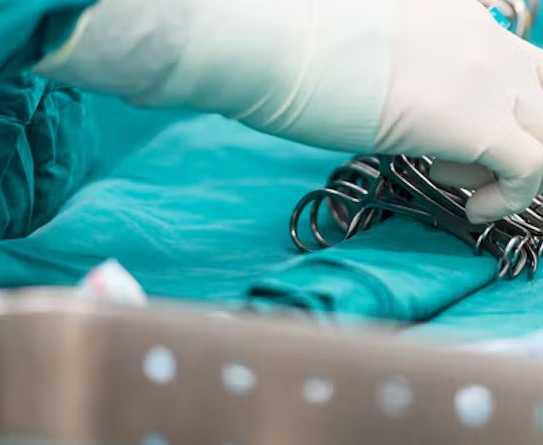The phrase "flank hernia" is inclusive of both original (congenital) defects, such as Grynfeltt or Petit hernias, and secondary (acquired) defects caused by trauma, abdominal surgery, iliac crest bone harvesting, or invasive procedures. It has been observed that the prevalence of secondary flank hernias can be as high as 31% after urologic surgery solely. With a 25 percent probability of incarceration as well as an 8 percent risk of strangulation, flank hernias typically require surgical correction.
Repairs of hernias that include skeletal structures, for example, the iliac crest and the twelfth rib, are extremely difficult to perform due to the complexity and difficulty of the hernia's location. For the repair of flank hernia, numerous surgical techniques have been used in the past. These techniques include primary repair, mesh repair, tissue flap repair, and approaches from both the midline and the flank. It is difficult to come to a consensus on the most effective method for the repair of flank hernias because the incidence rate is quite low and there are a variety of surgical solutions.

Flank Hernia Symptoms
In its early stages, this particular kind of hernia might not even be noticed by the patient. Patients who have a flank hernia frequently report the following symptoms:
- A protrusion on the posterior or lateral abdominal wall.
- Experiencing back pain in the region of the bulge
- By coughing or straining, the pain gets worse
Flank Hernia Causes
There are many possible causes of flank hernia, including:
- Straining or lifting heavy objects
- Obesity or pregnancy
- A history of chronic constipation
- Age-related weakening of the abdominal muscles
- Injury to the abdominal wall caused by blunt force
- Abdomen muscles weakening following surgery
- Congenital deformity of the muscles and bones
- An excessive amount of hard work repeated over and over
- Rapid weight loss
Flank Hernia Treatment
The patient is positioned on a beanbag so that they are in a lateral decubitus position. Over the middle area of the hernia sac, a large incision is made. In order to determine the abdominal musculature, dissection is carried out all the way down through the skin and the subcutaneous tissues. In many cases, the entire procedure can be performed in the retroperitoneal area. In the event that the peritoneum needs to be opened, a 2-0 polydioxanone suture is used to seal it.
The surgical therapy for flank hernias is typically more complicated than the surgical treatment for other forms of hernias because of the location of the hernia in the flank. Because of this, surgeons may suggest open repair rather than laparoscopic repair in order to be able to treat larger and more intricate defects in the abdominal wall. This is because open repair allows for better access to the area being repaired. Furthermore, open repair enables the placement of mesh on both the inside and outside edges of the hernia, resulting in more secure wound closure.
Flank Hernia vs. Lumbar Hernia
A lumbar hernia sometimes referred to as a flank hernia, is caused by weaknesses in the posterolateral abdominal wall that enable internal organs to protrude. Lumbar hernia is commonly caused by trauma to the back or side of the lower abdomen, but it can also result from surgical procedures. The most common age range for a person to develop a flank hernia is between the ages of 50 and 70. Men are more likely to be affected than women, and the condition affects the left side of the lower abdomen most of the time.






0 Comments
For comments please reply here.......